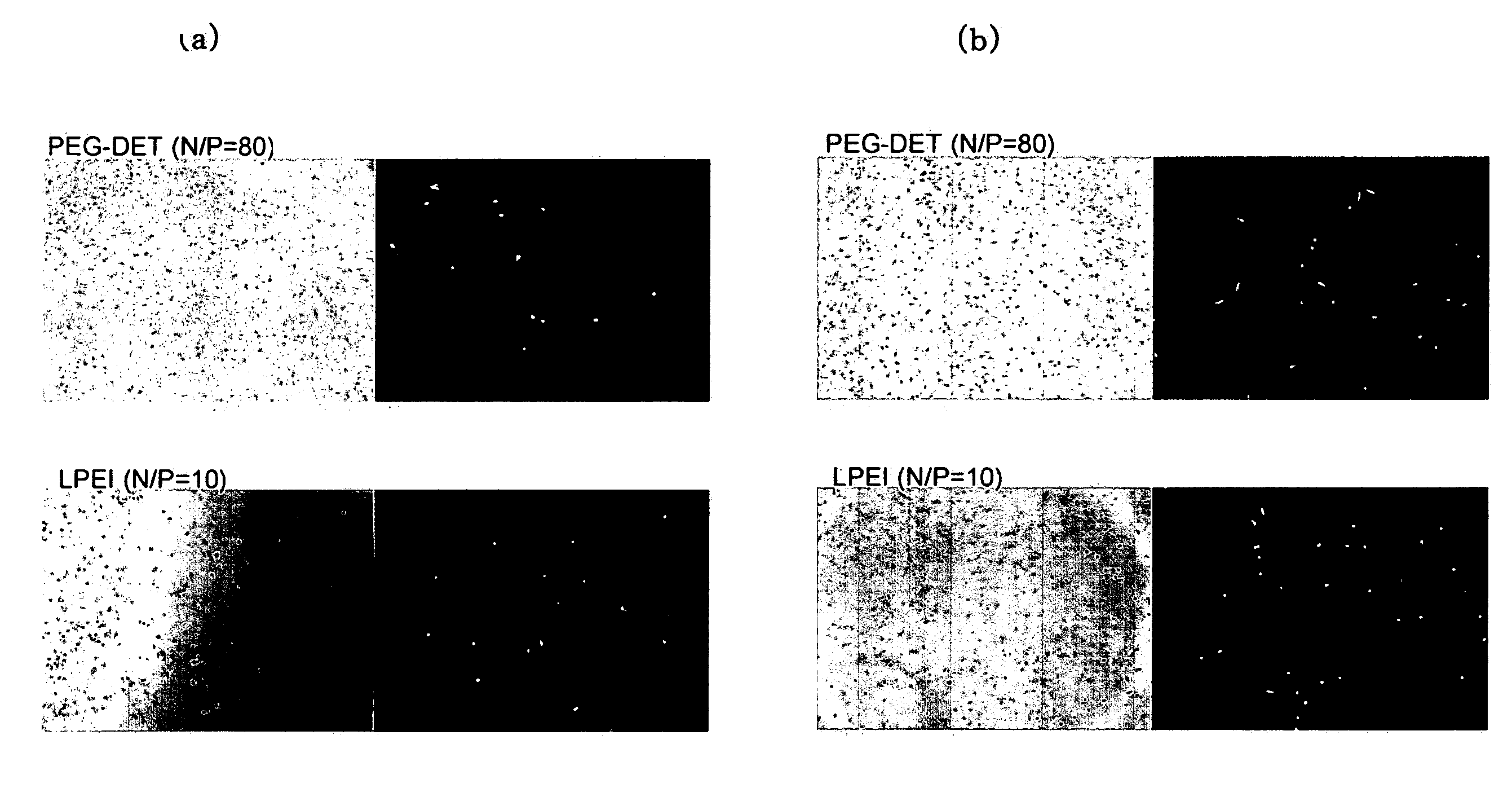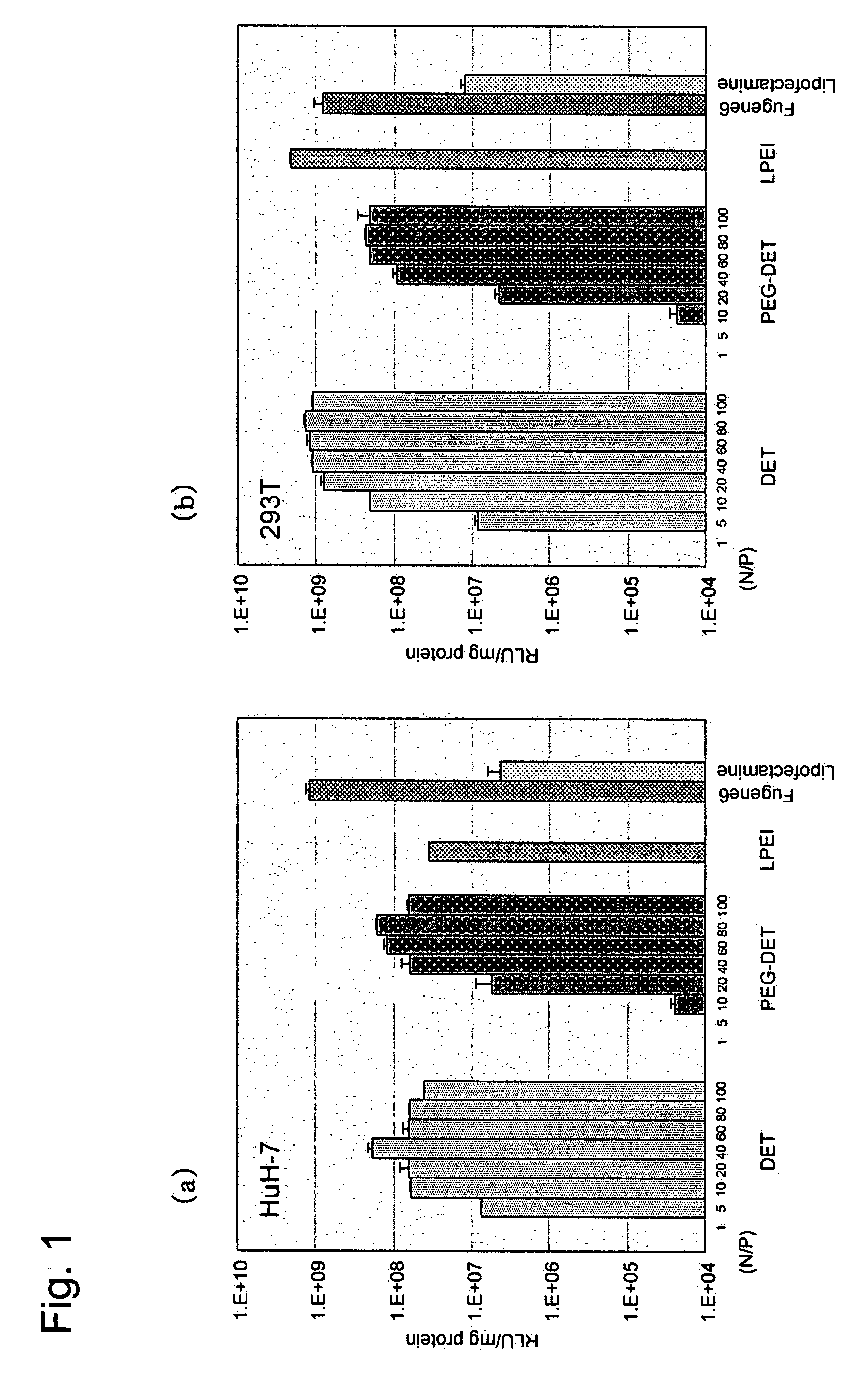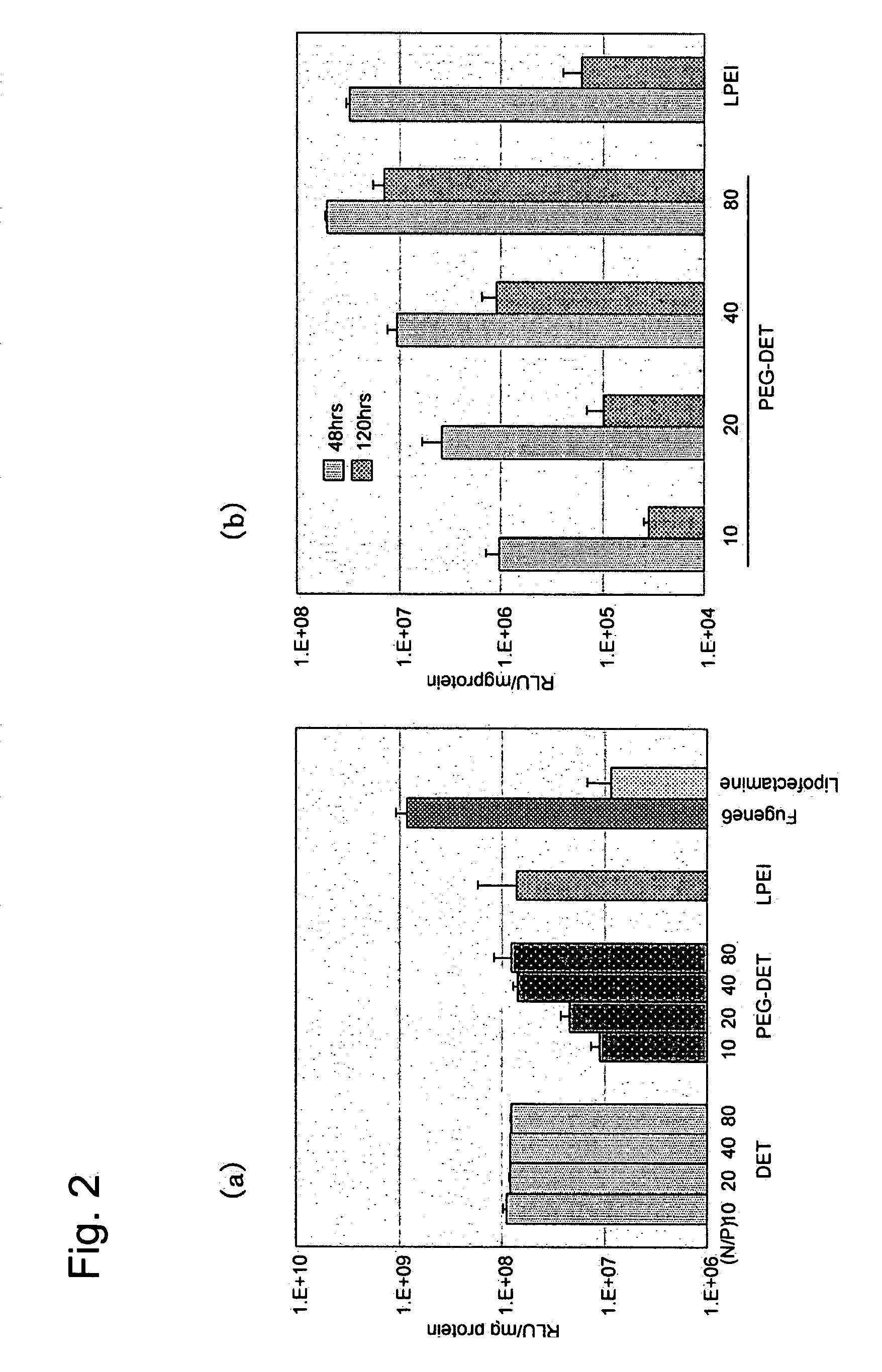Polycationically Charged Polymer and the Use of the Same as a Carrier for Nucleic Acid
a polymer and nucleic acid technology, applied in the field of polycation, can solve the problems of unsatisfactory toxicity against cells, unsatisfactory efficiency of introduction and expression of genes, and unsatisfactory results, and achieve the effect of low toxicity
- Summary
- Abstract
- Description
- Claims
- Application Information
AI Technical Summary
Benefits of technology
Problems solved by technology
Method used
Image
Examples
production example 1
Synthesis of poly(N-(2-aminoethyl)-aminoethylaspartamide)
[0039]β-Benzyl-L-aspartate-N-carboxylic anhydride (BLA-NCA) was dissolved in a mixed solvent of N,N-dimethylformamide (DMF) and dichloromethane, and was then subjected to polymerization reaction with use of butylamine as an initiator, at 40° C. for two days. After N terminal was acetylated with acetic anhydride, the resultant mixture was subjected to reprecipitation, and then to drying to give poly(β-benzyl-L-aspartate) (PBLA) polymer. PBLA was dissolved in DMF, and, then, diethylenetriamine in an amount of 50-fold equivalent with regard to benzyl ester was added. The resultant mixture was made to react at 40° C. for one day. The resultant reaction liquid was added dropwise to an aqueous solution of acetic acid. The resultant solution was put in a dialysis tube, and, thus, dialysis was conducted with use of 0.01 N hydrochloric acid as an outer liquid. After evaporation, freeze drying was conducted to give white powders of poly...
production example 2
Synthesis of polyethylene glycol-poly(N-(2-aminoethyl)-aminoethylaspartamide block copolymer
[0040]Polyethylene glycol whose one terminal was methoxy and the other terminal was aminopropyl, and whose average molecular weight was 12,000 was dissolved in dichloromethane. To the resultant solution, there was added a solution which had been prepared by dissolving BLA-NCA in a mixed solvent of DMF and dichloromethane. The resultant solution was made to react at 40° C. for two days. Furthermore, N terminal was acetylated with acetic anhydride, and, thus, polyethylene glycol-block-poly(β-benzyl-L-aspartate) (PEG-PBLA) was obtained. From analysis with NMR, the polymerization degree of PBLA portion was known to be 68. In the following, a block copolymer wherein PEG has a molecular weight of 12,000, and wherein PBLA portion has a polymerization degree of 68 may be referred to as PEG-PBLA (12-68) (parenthetically mentioned FIG. 12 stands for molecular weight of 12,000, and 68 stands for polymer...
production example 3
Synthesis of polyethylene glycol-poly(N-(3-aminopropyl)-aminopropylaspartamide block copolymer
[0041]The same PEG-PBLA (12-68) as used in Production Example 2 was dissolved in benzene, and was then subjected to freeze drying. The freeze-dried product was dissolved in DMF in an atmosphere of argon. To the resultant solution, there was added dipropylenetriamine, which had been purified by distillation drying, in an amount of 50-fold equivalent with regard to benzyl ester. The resultant mixture was stirred in argon atmosphere at 40° C. for 24 hours. The resultant reaction solution was added dropwise to 10% acetic acid. The resultant solution was dialyzed against 0.1 N hydrochloric acid with use of dialysis membrane having a molecular weight cut off of 3500. The resultant inner liquid was recovered, and was then freeze dried to give white solid of PEG-DPT block copolymer in the form of hydrochloride having structural formula (VI) below:
PUM
| Property | Measurement | Unit |
|---|---|---|
| volume | aaaaa | aaaaa |
| pKa | aaaaa | aaaaa |
| pKa | aaaaa | aaaaa |
Abstract
Description
Claims
Application Information
 Login to View More
Login to View More - R&D
- Intellectual Property
- Life Sciences
- Materials
- Tech Scout
- Unparalleled Data Quality
- Higher Quality Content
- 60% Fewer Hallucinations
Browse by: Latest US Patents, China's latest patents, Technical Efficacy Thesaurus, Application Domain, Technology Topic, Popular Technical Reports.
© 2025 PatSnap. All rights reserved.Legal|Privacy policy|Modern Slavery Act Transparency Statement|Sitemap|About US| Contact US: help@patsnap.com



